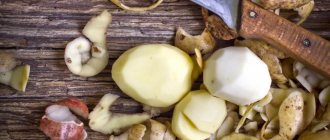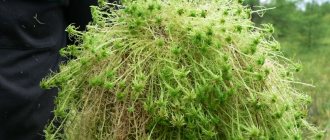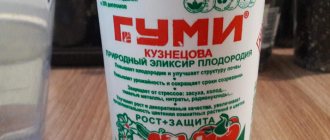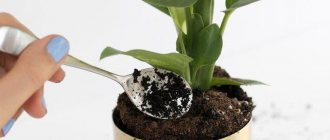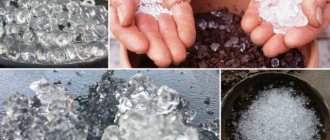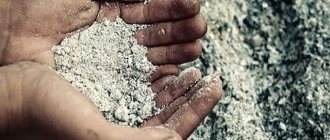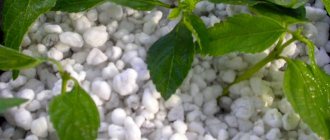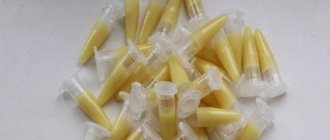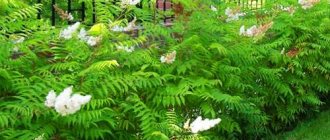Category: Organic fertilizers Reading time: 7 min · Views: 3,161
Cultivated plants need constant feeding, since the fertile layer of soil is depleted over time. Tea brewing as a fertilizer in the country is a very profitable and cheap fertilizer, which is appreciated by amateur gardeners in our country. Although there are voices of doubt about the effectiveness of such feeding, many summer residents successfully use sleeping tea in the garden and for feeding indoor flowers. Let's look at how best to use tea leaves for plants.
Tea composition
Large-leaf tea leaves are used more often as a fertilizer because they consist of a larger number of important substances:
- Potassium. A record holder in the composition of tea leaves, it is necessary for the complete nutrition of plants.
- Manganese. Keeps redox reactions within normal limits, stimulating the development of the root system of plantings.
- Sodium. Participates in the metabolism of sugars.
- Calcium. Improves intracellular metabolism.
- Iron. The mineral is necessary for normal respiration of living cultures.
- Magnesium. Takes part in the process of photosynthesis. If there is too little of it, crops wither.
In lower concentrations, dormant and fresh tea contains tannins and vitamins.
The benefits of sleeping tea for plants
An interesting way to give a “second life” to tea leaves is to add them to the soil. The tea leaves the plantings with maximum nutrients:
- Potassium is the main nutritional element; its deficiency leads to the death of the plant. The cake contains more potassium than other elements.
- Calcium is needed for the active development of roots and protein-carbohydrate metabolism.
- Iron takes part in photosynthesis and reduces the risk of chlorosis.
- Magnesium is responsible for the process of photosynthesis.
Green tea
In addition, the tea leaves contain sodium, aluminum, sulfur, manganese, boron and other elements. This is a comprehensive plant fertilizer that is affordable and easy to use. However, for a noticeable result, you will need a large amount of tea leaves used. Gardeners are confident that with regular application of fertilizer, the harvest will be more abundant, larger and tastier.
Is dried tea useful as a fertilizer for the soil? There are several advantages:
- increases moisture permeability of sandy soils;
- softens clay soils;
- normalizes acidity (especially when added simultaneously with ash);
- brewing is used to speed up the processing of manure into compost;
Organic processing
- Mulching the soil with tea leaves protects the root system from drying out, repels pests and prevents the germination of weeds.
Both black and green loose leaf tea are suitable as fertilizer. Artificial colors and flavors, which are most often added to packaged goods, can cause harm. It is usually produced from industrial waste, tea dust. Therefore, for preparing the drink and subsequent feeding, it is recommended to take a natural product.
Features of using tea as a fertilizer
When using tea leaves as a fertilizer, you need to remember that the maximum amount of useful components is contained in the active – liquid – form.
For processing seedlings, garden and indoor plants, large and medium-leaf tea is chosen. Bags are used only in extreme cases.
Nutritious tea leaves should not contain unnecessary substances. Even if the composition includes lemon zest, there is a high probability that such a product also contains flavoring.
Eco-fertilizers from tea
As you can see, a rational summer resident simply cannot throw the tea leaves into a bucket. This applies to many other wastes and our entire life in general. And then we are surprised that we are poor and don’t have enough money.
Look at Finland - they even use waste to heat their own houses and generate electricity, everything goes into use. But our landfills are only growing.
© Ilya Vladimirovich
| 2018-03-16 Amateur gardener
Effect of brewing on plants and soil
When using tea as a fertilizer, you can achieve the following effect:
- increasing soil acidity;
- loosening of clay soils;
- compost activation;
- increasing air permeability in the top layer of soil;
- substrate enrichment;
- improvement of mulching composition.
Flowers and vegetables respond very well to fertilizing with tea leaves: green manure, azalea, hydrangea, sorrel, cucumbers, simple radishes, pumpkin fruits, carrots.
If tea leaves are used to fertilize flowers in an apartment, then it retains moisture in the pots during the heating season, when the air is dry. The leaf product can be used as drainage.
Before introducing tea leaves into the soil, you need to determine the acidity level of the soil. If the indicator is high, then watering the soil or adding a dry version of the substance is not recommended.
Dormant tea for indoor plants and seedlings
The sleeping leaf mass is also suitable for indoor plants; it is placed at the bottom of the pot as drainage. There it will rot, saturate the soil with additional substances, and also retain moisture. A drainage layer of leaves will reduce the number of waterings and protect house flowers from drying out during the heating season.
Methods of use in indoor floriculture:
- mixing with soil to improve the growth of plants with vulnerable root systems;
Fertilizing indoor flowers with tea
- feeding;
- growing seedlings.
Flowers with fragile roots respond well to the sleeping mixture in the soil: delicate violets, clivias, and begonias, beloved by many. To do this, mix the soil mixture and dry tea leaves in a 3:1 ratio. The disadvantage of application is that it provokes the development of soil flies.
Dormant leaf mass is not used for mulching potted plants. This may lead to root rotting.
Some gardeners have the habit of watering pots with leftover tea - this is a significant mistake in care. This is done only with plantings in open ground.
Fertilizing flowers with tea is healthy and cheap at the same time. An infusion is prepared from 1 cup of dry raw materials and 3 liters of boiling water. Such watering is useful for cacti, ferns, hibiscus, anthuriums. The infusion is used cooled in the same quantity as water for irrigation. The prepared solution neutralizes acidity, so it is not recommended to overuse such watering.
Spent raw materials can serve as fertilizer for seedlings on the windowsill. To do this, gardeners mix leaf and garden soil and compost in equal proportions, and add wood ash to the mixture in the proportion of 1 cup per bucket. The workpiece is kept in the cold during the winter. This allows you to disinfect it. Before sowing seeds, dry substrate is poured into the prepared soil in a 3:1 ratio. Such plantings grow strong and take root more easily after picking and transplanting into open ground. According to reviews from summer residents, sometimes only one brewing mass is enough to feed seedlings.
Video about the rules for using tea leaves.
Using tea in the garden
The areas of application of the sleeping product are quite wide. You can use tea leaves as fertilizer for the following purposes:
- Improving soil for small seeds. The product stimulates the growth of most edible greens and some root vegetables. For planting, take 1 tsp. carrot, parsley or basil seeds, mixed with a glass of dry tea leaves.
- Mulching. As mulch, tea leaves are used only on the surface of open ground, which is regularly ventilated and warmed by the sun. The old mixture, prepared in advance, is distributed over the beds.
- Improving soil quality. To increase fertility, use 500 g of used tea per 1 m2.
- Fertilizer. To improve the germination of plants, a special microflora is created in the top layer of soil using tea. The remains of the tea leaves are mixed with ash, placed around bushes and tree trunks, and mixed. As a result, the effect of the tea is prolonged, and the plantings receive more beneficial substances. This method of application is ideal for tomatoes, cucumbers, gladioli and beans.
- Compost. The brewed tea is taken out to a rotting heap, mixed with what is already in the fertilizer preparation. As a result, nitrogen production begins and the fermentation processes of organic products are accelerated. It is important to first remove any artificial and metal elements from the brewed product.
- Feeding with infusion. Freshly brewed tea can also be used as a fertilizer in liquid form. For 1 tbsp. leaves take 3 liters of boiling water. Pour a warm decoction under the roots of the plants. They fertilize crops in the country or in the garden with this product. The ground can be open or closed.
How to use homemade fertilizer: recipes for the garden
The tea leaves are used as a nutrient for both indoor plants and seedlings, and for planting in open ground. Raw materials are prepared in this way:
- after drinking tea, the remains are laid out on a sieve or dish in an even layer;
- the raw materials are dried and poured into any convenient container for storage.
In a house where tea is often served, such fertilizer quickly accumulates in sufficient quantities for spring preparation of the site.
Sweetened organic matter will attract ants and other insects, so it is better not to add sugar.
In order to improve the soil, tea is added to the top layer of soil during spring digging. The beds are water- and breathable. The recommended dose per 1 m2 is 0.5 kg of dried leaf. Organic matter quickly decomposes, saturating the soil with nitrogen necessary for growth. It is not necessary to fertilize the entire area; it is enough to fertilize a couple of beds for vegetables or flowers. When watering, the raw materials will release useful substances.
Feeding planted seedlings
Brewed leaves can be poured into holes when planting garden crops. For better effect, they are mixed with ash and mineral preparations. You can fertilize the following plantings at your dacha with tea:
- tomatoes, cucumbers, beans, peppers;
- roses, gladioli, peonies and other flowers.
To increase the germination of carrot seeds, they are sprinkled with dry tea leaves immediately after sowing. The seeds will germinate and will be provided with nutrition from the first days.
To mulch garden beds, you will need a layer of tea leaves 5 cm thick. This way, the weeds will not receive enough light to develop. Another way to use tea raw materials for the garden is to add it to the compost pit. Tannins significantly speed up the decomposition process.
Using tea bags
Tea bags can be used as seedling tablets. They easily replace peat analogues. Sequencing:
- open the top of the paper package;
- add universal soil;
- put seeds inside;
- wait until the plants reach the picking phase;
- transplant them into pots or open ground.
The advantage of this growing method is the ability to transfer crops directly with bags. After some time, the paper will dissolve in the soil. It is good to use this method of growing seedlings on products that are sensitive to picking (bell peppers, eggplants
Tea brewing in cosmetology
Every woman strives to remain young and beautiful for as long as possible, modern skin care products and folk recipes help her in this. One of these recipes can be considered the use of tea leaves as a means to improve complexion and increase skin tone.
The following procedures are recommended:
- Soak a cotton pad with fresh tea leaves, then apply a compress to your eyelids. This procedure is appropriate before bed or during the day. Leave the discs on your eyelids for 20-30 minutes. As a result, the feeling of heaviness in the eyelids will disappear, the skin will become more elastic, and swelling will disappear.
- If you have problem skin, then tea leaves will help eliminate the problem. To do this, you need to follow simple steps: put the tea leaves on a napkin, add coffee grounds to it - use the resulting mass to cleanse your face. It is preferable to perform the procedure in a bath or sauna.
Use in everyday life
Used tea leaves will make everyday tasks easier. To give mirror surfaces shine and shine, you need to prepare a weak solution of tea leaves of a drunken drink, moisten a cloth in it and wipe the surface.
Wet tea leaves can also help solve the problem of ash flying around when cleaning the fireplace. You just have to spread it in a thin layer over the ash and then collect it with a brush.
The remains of drunken tea are used to clean clothes and shoes made of dark leather and fur products. In the first case, you can wrap the wet tea leaves in a cloth and, by rubbing the surface, achieve saturation of its color in the glossy areas. Tea will add shine and purity to natural fur of dark tones. To do this, spread the product on a flat surface, cover it with squeezed-out tea residue for a few minutes, and then clean it with a brush.
Used tea leaves will also be useful when cleaning the carpet. If you spread the pressed tea raw material on top of the cleaned pile and give it time to act and dry, you will notice that the color of the coating has become brighter.
You can clean polished furniture from dirt and restore its shine by wiping it with a soft cloth in which damp, sleepy tea has been previously wrapped.
Advantages and disadvantages of the method
Fertilizing and watering using tea leaves have both pros and cons. The main advantage of this method is its accessibility. Tea leaves are found in every home and are quite easy to use. There is no need to look for special fertilizers and dilute them in a special way. At the same time, the benefits of tea leaves have long been known.
Read also: How to cook delicious bulgur porridge
Among the advantages of this method the following facts are also mentioned:
- Tea leaves scare away cats. Cats quite often nibble on plants and throw soil out of the pot. To repel pets, gardeners use various methods, for example, citrus peels. But no less effective is tea leaves, the smell of which repels cats.
- You can use tea leaves in a variety of ways. In addition to watering, tea leaves act as mulch or even drainage. When replanting a plant, it is recommended to supplement the drainage with tea leaves. By the time the roots grow to the bottom of the pot, the tea leaves will already rot and become an excellent fertilizer.
- Ease of use. Simply water the plant with the remaining tea. This is a simple procedure that anyone can do.
The method also has several disadvantages. For example, not every tea is suitable. It must be pure, without additives, and fresh. The presence of any chemical impurities will lead to a negative result. Overmoistening is also a negative factor. Often the use of tea leaves can lead to chlorosis. You also need to monitor the strength of the tea. Tea that is too strong will harm the flower, and tea that is too weak will not be effective enough.
The disadvantage of the method is its non-universality. Not all plants like such fertilizers. If the flower prefers acidic soil, then after watering it with tea it will begin to hurt.
More information can be found in the video:
Cultivated plants need constant feeding, since the fertile layer of soil is depleted over time. Tea brewing as a fertilizer in the country is a very profitable and cheap fertilizer, which is appreciated by amateur gardeners in our country. Although there are voices of doubt about the effectiveness of such feeding, many summer residents successfully use sleeping tea in the garden and for feeding indoor flowers. Let's look at how best to use tea leaves for plants.
What kind of tea can be used for fertilizer?
Not every drink is suitable for application to the soil. To make this feeding as beneficial as possible for your plants, use the following tips:
- The drink should not contain artificial flavors, dyes or flavoring additives.
- You should not add sugar to tea. A sweet solution not only creates a favorable environment for the development of mold and bacteria, but also attracts insect pests.
- Feel free to use a drink that you did not finish for some reason. The main thing is that it is fresh, without any foreign smell.
Important : fertilizing with tea leaves has a good effect on the development of cacti, ferns, hibiscus and spathiphyllum. These plants love the tannins found in hard water.
Is it possible to water flowers with tea leaves?
This issue remains controversial, since, as we have already written, tea leaves can do more harm to a houseplant than good. But, nevertheless, there are a large number of positive reviews saying that when watered with tea leaves, a stunted flower was transformed and bloomed. It is likely that the achievement of the effect depends on the soil in which the plant is planted, as well as on its variety.
In our opinion, there should be moderation in everything. First, try pouring a small amount of high-quality, non-sweet tea over the flower. Evaluate the results of watering. If all is well, alternate regular watering and watering with tea leaves. Do not overdo it! Only you yourself can understand how much tea leaves you can use for watering indoor flowers. If you notice signs of soil acidification or the plant begins to wilt, stop immediately. This method probably isn't right for you. Try using a specialized product to recharge.
You may be interested in: How long does tea last after brewing?
Where is tea leaves used?
There are many options - judge for yourself:
- Used tea bags will help get rid of the unpleasant odor. Simply dry them and place them in the refrigerator, microwave, or dishwasher overnight. You can also use tea bags for shoes.
- If you are going to barbecue and are preparing the marinade, add tea bags to the meat. This will make it softer and tastier.
- Used tea can be useful for preparing foot baths. They will help relieve fatigue and overstrain, and also relieve sweating.
- Used tea leaves can help when cleaning the house. Skilled housewives wash windows with re-brewed tea, pouring it into a spray bottle, and also clean pots. If the dishes are very greasy, it is recommended to leave the used tea leaves overnight, after first filling the frying pan or baking sheet with warm water.
- Used tea bags are also used for cleaning wooden floors.
- Re-brewed tea can be used to rinse hair after washing.
What benefits can be found in pouring sleeping tea?
If you conduct a chemical analysis of tea, you can find mineral and organic substances in the drink, as well as tannins that acidify the soil. Not all indoor plants need such acidification. We can definitely say that ferns that suffer from the action of carbonate salts of soil and water, and cacti that love hard water and the tannins it contains, respond well to it.
This is interesting: How to deal with diseases and pests in Fuchsia at home
Other indoor plants react rather restrainedly to watering with tea leaves. At least, there is no reliable experimental data that would prove the obvious benefits of such fertilizer. There is an opinion that regularly mulching the soil with tea residues helps retain moisture in it, and if you apply tea leaves under indoor flowers and lightly dig it in a flower pot, the plants will receive fertilizer with an extended period of validity.
Disadvantages of the method
Opponents of such irrigation have a large number of arguments against the arguments of the other side. They deserve to be looked at in more detail.
- Modern floriculture has a sufficient selection of fertilizing and fertilizers, universal and specialized soils, adapted to the needs of all types of plants. It is possible to calculate the optimal level of nutrition that flowers require without adding additives of questionable composition.
- Flavored tea with additives can lead to sad consequences for flowers: rotting of roots, imbalance of soil nutrients.
- Watering tea leaves with added sugar leads to the appearance of fungus gnats, black midges and other pests in the pot, which are not easy to get rid of.
- When using moldy tea, you can introduce bacteria and mold fungi into the soil and cause soil contamination.
- For home greenhouse specimens that prefer acidic soil, such watering can only be harmful.
Advice
Soil acidification can be determined by such signs as a greenish coating on the soil that has an unpleasant odor, rotting of inflorescences and leaves, and mold on plant petioles.
These arguments will make supporters of “grandmother’s” methods think.
How to properly use tea leaves for watering and fertilizing?
This option may be acceptable for supporters of organic floriculture, since natural remedies have recently become widespread.
Advice
You can use any tea for watering: black, green, herbal. The main thing is that it does not contain additives or flavorings of synthetic origin.
How to properly water plants with tea infusion?
- Make sure your flowers need soil acidification. You can do a simple soil analysis using litmus paper.
- There is no need to constantly pour this fertilizer under the flowers, a few times a month is enough - time its application with the next watering.
- Do not water plants with tea with added sugar, or with sour or moldy solution.
- You can use a fresh, weak and unsweetened solution at room temperature.
Advice
If, in addition to watering, tea leaves are also poured under the flowers, its amount must be strictly dosed, mixing with the top layer of soil. This method will help retain moisture, which will allow you to water the plant less often.
